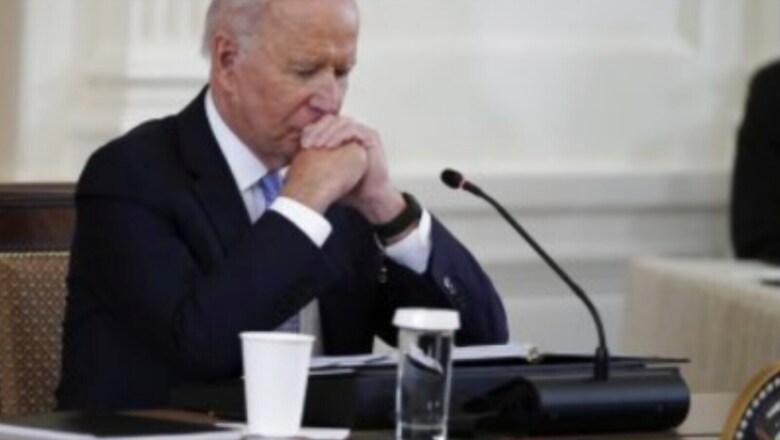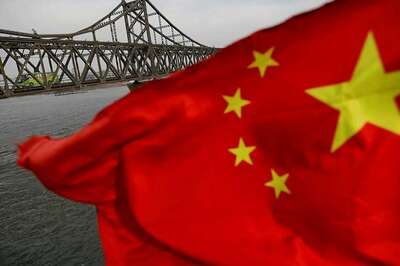
views
Washington recently pulled back the curtains on its long-awaited Indo-Pacific Strategy. In doing so, the Biden Administration has laid out the foreign policy precepts that will guide America’s policy in the region.
Right out of the gate, the new strategy document reflects America’s determination to exploit its greatest strategic advantage over competitors like China and Russia: its unrivalled network of alliances and partnerships. From shoring up its existing treaty alliances with Japan, South Korea and Australia to expanding partnerships with India and emerging groupings like the Quad, Washington has made clear that it will lean on partnerships to create a “balance of influence in the world that is maximally favourable to the United States”. In a welcome development, the strategy also refocuses US attention and investment on Pacific Island nations which have become an emerging battleground in the brewing US-China conflict. Chinese investment, diplomatic missions and even military facilities have found a foothold in these countries when the US has been preoccupied elsewhere.
Notably, the document also buries America’s past strategy of engagement with China once and for all. While Washington once prized helping Beijing become a “responsible stakeholder” in the international system through increased political and economic contact, Biden’s new Indo-Pacific strategy makes clear that such pretentions are a thing of the past. Washington’s goal will be to shape China’s behaviour by creating pressures in the latter’s external environment instead of hoping to induce domestic reform and change in the People’s Republic of China.
The document also reflects Washington’s thinking on a free and open Indo-Pacific. While America reiterated its support for a rules-based international order and freedom of navigation, Biden’s Indo-Pacific strategy has also carved out a place for freedom, democracy and transparency. Some have worried that an American strategy that chooses to promote democracy may find little purchase in a region that plays host to numerous authoritarian regimes. However, Biden Administration has chosen to focus on strengthening civil society, working against corruption and supporting independent journalism. This strategy, which should ideally eschew a messianic “authoritarians versus democracies” narrative, helps push transparency and openness without making less democratic regimes (like Thailand) nervous about Washington’s pro-democracy strategy.
Finally, the strategy also lays down America’s commitment to a security deterrent in the region. From defending the Taiwan Straits to denuclearisation on the Korean Peninsula, Biden’s America will look to play its traditional military role in the region. Despite a rocky start, the United States’ Pacific Deterrence Initiative (PDI) seems to have found firm ground. Under the PDI, the American military presence in Asia will be reoriented away from eye-watering investments on expensive platforms like the F35 fighter jet programme in favour of practical improvements in defending American and allied military bases and logistics. The PDI’s initial success signals that Washington is willing to invest the resources and personnel needed to be a force to reckon with even as China’s military buildup continues at a dizzying pace.
The Indo-Pacific strategy also lists India as a top partner for US activities in the region. As part of its Indo-Pacific Action Plan, Washington plans to “support India’s continued rise and regional leadership”. From its connections to Southeast Asia and expertise in counter-terrorism to its efforts in the Quad. With the US Coast Guard set to expand its presence in South Asia, this opens up opportunities for New Delhi and Washington to cooperate on maritime security and domain awareness. However, the strategy doesn’t stop at that. Washington has made its desire to increase interoperability among partner nations well-known. Given India’s status as a Major Defence Partner, expect the New Delhi-Washington partnership on military technologies and platforms as well as space and cybersecurity to accelerate.
However, the document is held back by the glaring lack of an economic and trade strategy. After closing the door on participation in regional trade agreements like the CPTPP (Comprehensive and Progressive Agreement for Trans-Pacific Partnership) and RCEP (Regional Comprehensive Economic Partnership), Washington finds itself with few good options on trade policy. Biden’s proposal, the Indo-Pacific Economic Framework, remains shrouded in mystery with little and less by way of concrete proposals. Perhaps reflecting this lack of a surefooted economic strategy, the section on “Driving Indo-Pacific Prosperity” is among the shortest in the document.
Further, the new Indo-Pacific strategy is also noticeably light on details. While strategy documents tend to provide broad statements of principle, the Trump era versions of the Indo-Pacific strategy had significantly more to offer by way of concrete policy proposals. For example, little has been heard about the Quad Green Shipping Network in the months since it was first announced at the Quad Leaders’ Summit in September 2021. This initiative, aimed at reducing the ecological footprint of global trade, is just one of several that could have found more than a cursory mention in the strategy.
Biden’s Indo-Pacific strategy seems long on attitude yet disappointingly understated in terms of policy prescriptions. Will this new document serve as a coherent intellectual anchor for America’s efforts in the region? The proof of the pudding will be in the eating.
The author is a research associate, strategic studies programme, Observer Research Foundation (ORF). The views expressed in this article are those of the author and do not represent the stand of this publication.
Read all the Latest Opinion News and Breaking News here




















Comments
0 comment